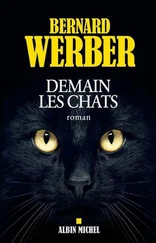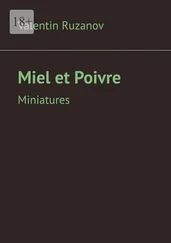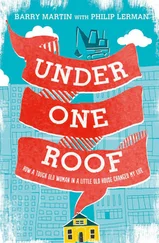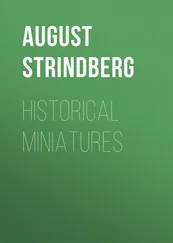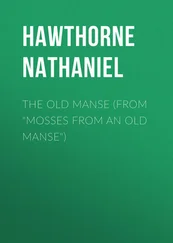Joshua Foster - Chats on Old Miniatures
Здесь есть возможность читать онлайн «Joshua Foster - Chats on Old Miniatures» — ознакомительный отрывок электронной книги совершенно бесплатно, а после прочтения отрывка купить полную версию. В некоторых случаях можно слушать аудио, скачать через торрент в формате fb2 и присутствует краткое содержание. Жанр: foreign_antique, foreign_prose, на английском языке. Описание произведения, (предисловие) а так же отзывы посетителей доступны на портале библиотеки ЛибКат.
- Название:Chats on Old Miniatures
- Автор:
- Жанр:
- Год:неизвестен
- ISBN:нет данных
- Рейтинг книги:3 / 5. Голосов: 1
-
Избранное:Добавить в избранное
- Отзывы:
-
Ваша оценка:
- 60
- 1
- 2
- 3
- 4
- 5
Chats on Old Miniatures: краткое содержание, описание и аннотация
Предлагаем к чтению аннотацию, описание, краткое содержание или предисловие (зависит от того, что написал сам автор книги «Chats on Old Miniatures»). Если вы не нашли необходимую информацию о книге — напишите в комментариях, мы постараемся отыскать её.
Chats on Old Miniatures — читать онлайн ознакомительный отрывок
Ниже представлен текст книги, разбитый по страницам. Система сохранения места последней прочитанной страницы, позволяет с удобством читать онлайн бесплатно книгу «Chats on Old Miniatures», без необходимости каждый раз заново искать на чём Вы остановились. Поставьте закладку, и сможете в любой момент перейти на страницу, на которой закончили чтение.
Интервал:
Закладка:
Whilst I am unable to enter upon details of the earliest schools, I may observe that the material upon which work of this nature was done has a practical bearing upon our subject. It was upon vellum, sometimes stained purple, upon which the letters were written in gold or silver. There is a magnificent example of this work, known as the Codex Purpureo-Argenteus, preserved at Upsala, in Sweden. This has been dated as early as A.D. 360. And I remember the pride with which the monks in the remote monastery on the Isle of Patmos showed me five pages of one of the Gospels, also on vellum, stained purple, which had been preserved in their library with religious care for unknown centuries. The surface of the vellum, naturally greasy, would have to be carefully prepared for the art of the "steyners," as they came to be called. When so prepared it was called Pecorella .
To vellum succeeded cardboard. Nicholas Hilliard and the great English miniature painter Samuel Cooper commonly used old playing cards; and a very good substance for the purpose they were, not being so liable to cockle as vellum, nor to crack, curl, and split as ivory under certain conditions is liable to do. It has already been noted that ivory did not come into use for such purposes until about the end of the seventeenth or beginning of the eighteenth century.
This is a very important point in detecting forgeries, and, indeed, in determining the age of any work about which doubt may exist.
The way to paint miniatures is no part of the subject of this book; nevertheless, by way of giving a practical value to its pages, I may state the method employed by a miniature painter with whom I was well acquainted and whose work I greatly admired, and this seems a convenient place to do so. The artist to whom I refer was the late Robert Henderson, a self-taught man, born in Dumfries. He lived to the close of the nineteenth century, but the manner of his execution was essentially that of the mid-Victorian painters, and whilst it had not quite the brilliancy of the flesh tones of Sir William Ross, for example, whose work he greatly admired, it was always conscientious, sound, and excellent.
Without being laboured, it was always marked by a careful finish. He was a frequent exhibitor in the Royal Academy, but was indifferent to the distinction, having constant employment from Messrs. Dickinson for a long series of years, during which he painted a large number of the British aristocracy. I am able to subjoin some account of his method of working and choice of colours from particulars he gave me himself, and as they may be useful to others, I extract them pretty much in his own words: —
"Having chosen a piece of ivory of good colour and even texture, prepare its surface by rubbing it with the finest glass paper. The first step is to draw the likeness with a blacklead pencil on paper, not on the ivory itself, because, if any corrections are needed, they cannot be made without smudging and making the ivory dirty, a thing to be studiously avoided. This drawing should then be carefully transferred to the surface of the ivory by means of a piece of tracing paper.
"Now take a nice flat sable brush, and wash the face all over with a flesh colour, then indicate the features, eyes, and so forth, touching in the nostrils and mouth. Next prepare a grey tint, made of cobalt or ultramarine with a tinge of red to give it a lilac tint. Wash this all round the outer part of the face – not touching the centre of the face. Then with a little blue mixed with the flesh colour, work up the face until you get somewhat the effect of an engraving. This being done, you may proceed to put in the deepest shadows, e. g. , under the nose and eyebrows, with a warm colour composed of a light red with a little blue in it. Having got your deep shadows in, use the grey again, this time with a little more flesh colour, and blend the whole together.
"For a flesh colour I used to employ rose madder and cadmium yellow in about equal proportions; for men's complexions light red alone makes a good flesh wash. There is a new red brought out which is warranted to be thoroughly permanent; it is a useful colour, called mazarine, and comes in for everything. There have been suspicions cast upon rose madder, but I have found it stand well enough in ordinary miniature painting. Carmine was used by Sir William Ross and Thorburn, certainly, but that was apt to go dark in colour. The madders are very delicate colours.
"Eyes – for hazel use burnt sienna and French ultramarine, real ultramarine being very expensive. For ordinary dark brown eyes nothing is better than sepia; for blue eyes it depends on the shade – if bright strong blue, cobalt is the best colour; for grey eyes use cobalt and a little light red – the latter very sparingly. Cat's eyes (by which I mean greenish) require peculiar colouring, which must depend on circumstances and be treated accordingly.
"Hair is a troublesome thing to get right. For golden hair I use a very thin wash of burnt sienna; for the half tones a purple tint – blue and red mixed in equal parts, and for the deep shadows burnt sienna. For ordinary dark hair nothing is better than sepia, and for the high lights a purple grey – blue and a touch of red – that gives a glossiness to the hair. For grey hair simply mix sepia and ultramarine; for red hair burnt sienna is used principally, shaded with sepia in the dark parts.
"Backgrounds – for the ordinary, deep, plain, brownish, the best thing is a wash of burnt sienna and ultramarine, in proportions as required to obtain warmer or cooler effects. For a cloudy sky or background use cobalt for the blue and light red mixed with cobalt for the deeper shadows; where the shadows come near the figure, use brown madder and cobalt; touch the edges of the clouds with light red alone, to give a warm, cloudy effect.
"Draperies – for a man's black coat use blue-black and cobalt, mixed in about equal proportions, and a little madder lake; put in the shadows with sepia. For a lady's black silk use much the same, only less blue-black and more cobalt, with a little light red in it; use sepia again for the shadows, as it gives a warmer tone than black itself. If lights are required on a black coat when it is too black, body colour must be used – white, with a little light red mixed with it."
CHAPTER III
CONCERNING ENAMELS AND ENAMEL PAINTERS
The subject of enamel has a close relation to that of these pages, although its uses, as need hardly be said, far transcend the limits of portraiture. Every substance, whether earthenware, stone, or metal, to which a vitreous substance can be made to adhere by heat may be enamelled, but this term is usually restricted to metalwork ornamented by a vitreous glaze. As in the case of illuminated manuscripts, we find the earliest instances of the use of enamel in Egypt, and Dr. Birch is our authority for believing that there was a method of inlaying glass, jasper, and lapis lazuli, which resembled enamel in effect, employed as far back as the Fourth Egyptian Dynasty – that is to say, some four thousand years before the Christian era. The Chinese have had it in use for unknown centuries, and it was applied by the Etruscans and Greeks to enrich their jewellery. It has been found employed for horse trappings and for human ornaments, such as brooches, bracelets, and rings, both in this country and in Ireland, under circumstances which lead us to assign it to pre-Roman days.
But it is with the seat of Roman power on the Bosphorus, namely, Byzantium, in the early Christian centuries, that antique enamels seem most closely associated; and the museums of Europe contain great numbers of marvellous works of this description originating from that source. What has come down to us is for the most part intended for ecclesiastical use; reliquaries, diptychs, triptychs, the covers of missals, chalices, crosses, and objects of a like nature abound. On many of these there are what may, in a sense, be termed portraits of saints and ecclesiastical dignitaries; but it is obvious that no attempt at likeness, as we moderns understand it, can have been made in this work of the fourth to the eleventh centuries. This Byzantine style and influence, which have left such a deep mark in art, may be said to survive to this day in the ritual of the Greek Church; but that is another story. I may remark that the Byzantine work is for the most part what is called cloisonné ; this term, and one of a somewhat similar sound, namely champlevé , is constantly used in descriptions of old enamel, and it may be well, therefore, to define what is meant by each respectively.
Читать дальшеИнтервал:
Закладка:
Похожие книги на «Chats on Old Miniatures»
Представляем Вашему вниманию похожие книги на «Chats on Old Miniatures» списком для выбора. Мы отобрали схожую по названию и смыслу литературу в надежде предоставить читателям больше вариантов отыскать новые, интересные, ещё непрочитанные произведения.
Обсуждение, отзывы о книге «Chats on Old Miniatures» и просто собственные мнения читателей. Оставьте ваши комментарии, напишите, что Вы думаете о произведении, его смысле или главных героях. Укажите что конкретно понравилось, а что нет, и почему Вы так считаете.


